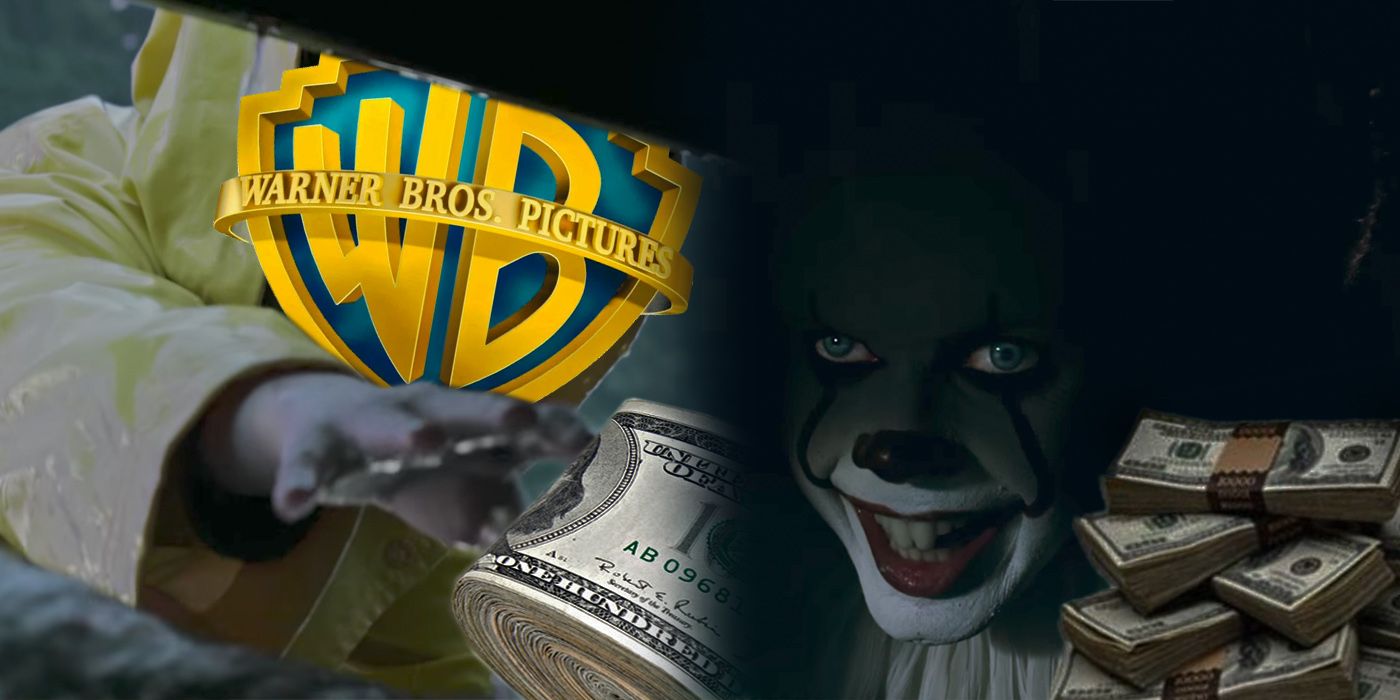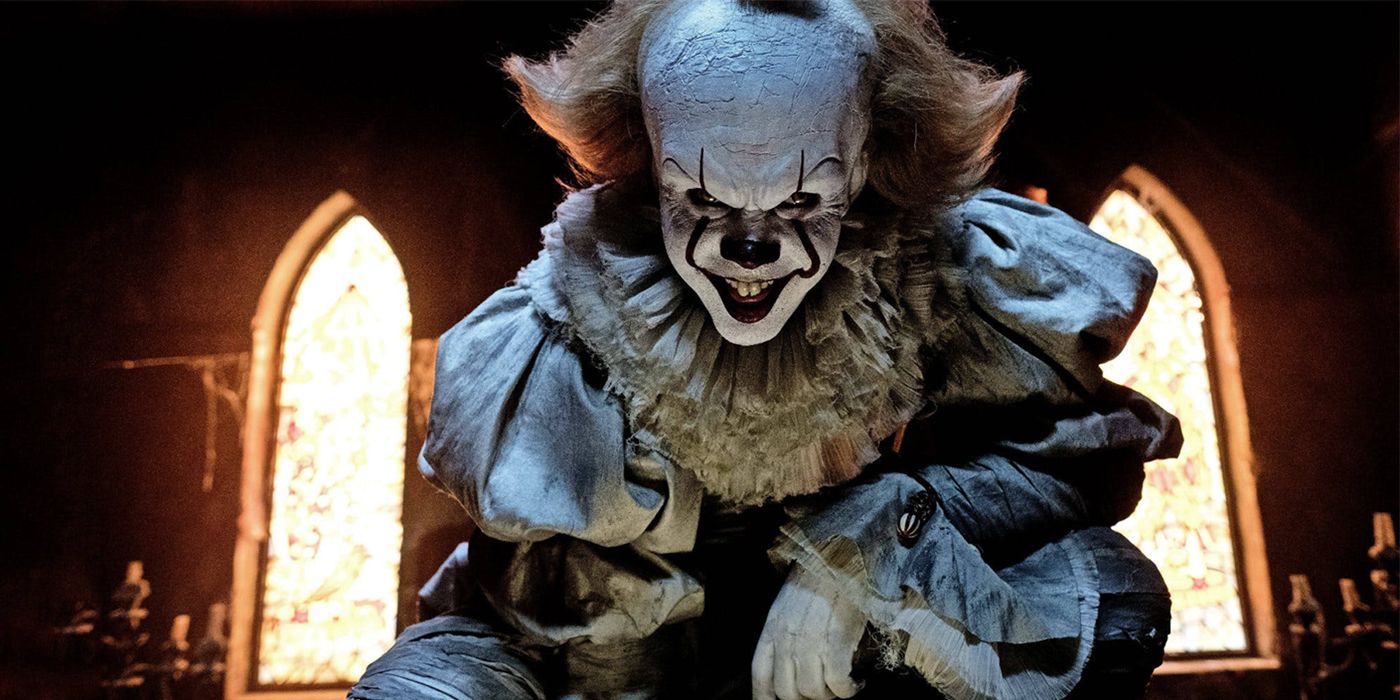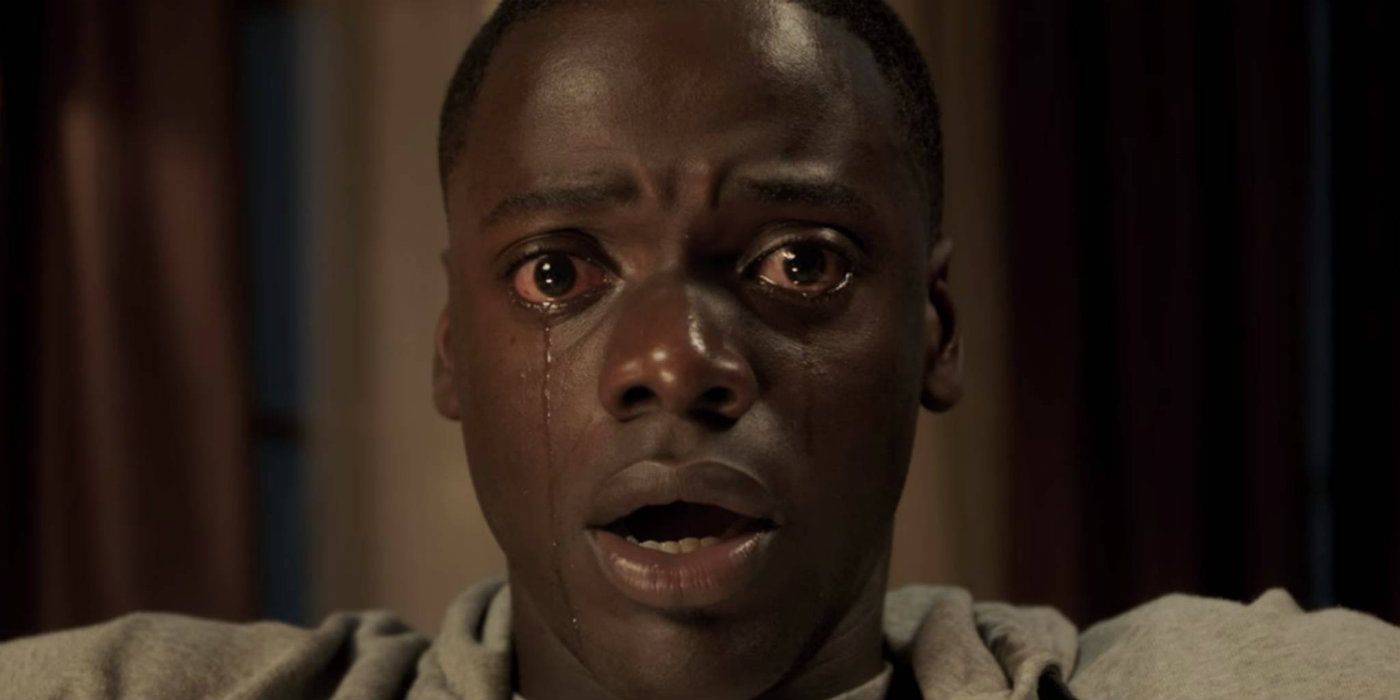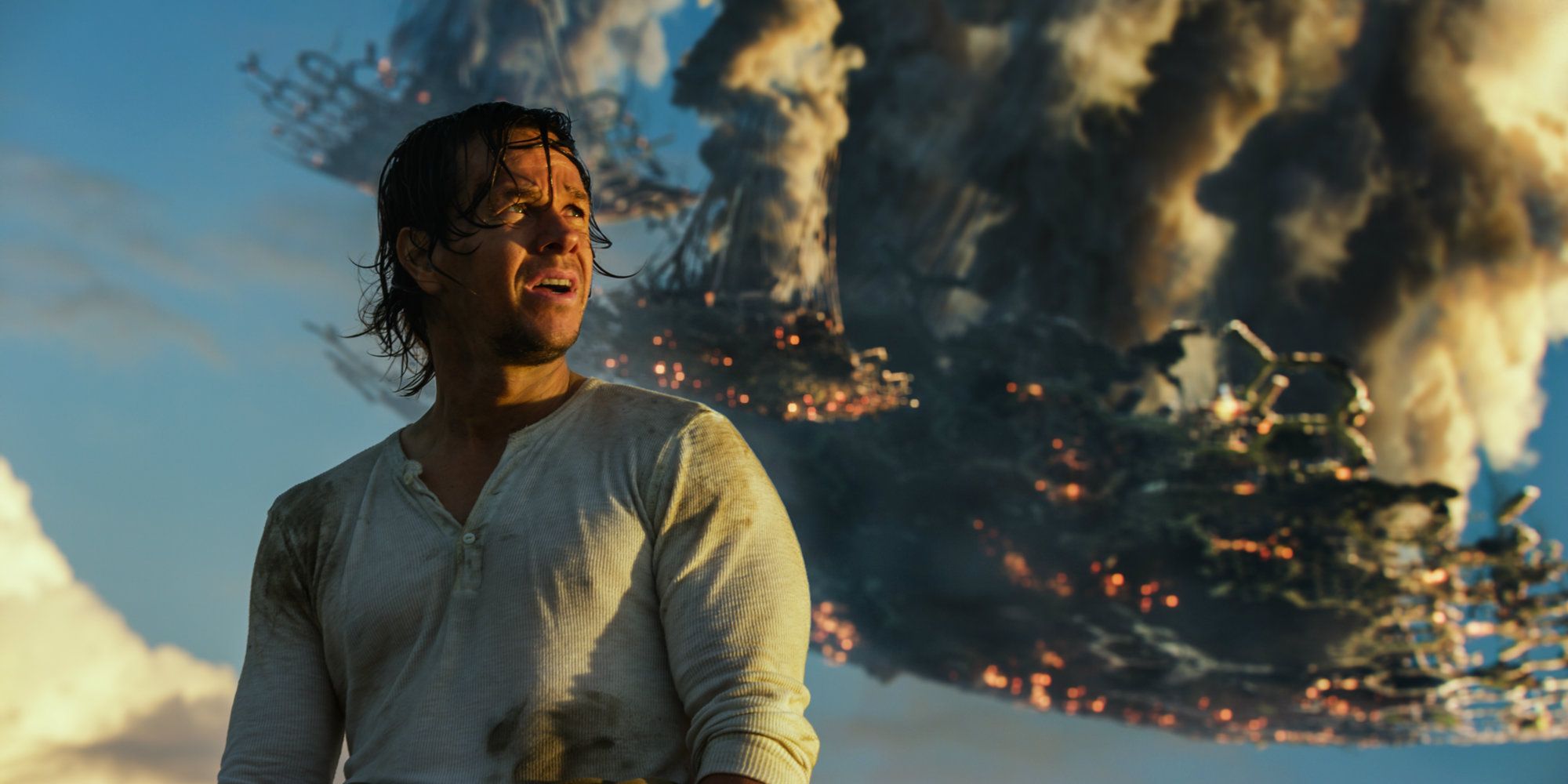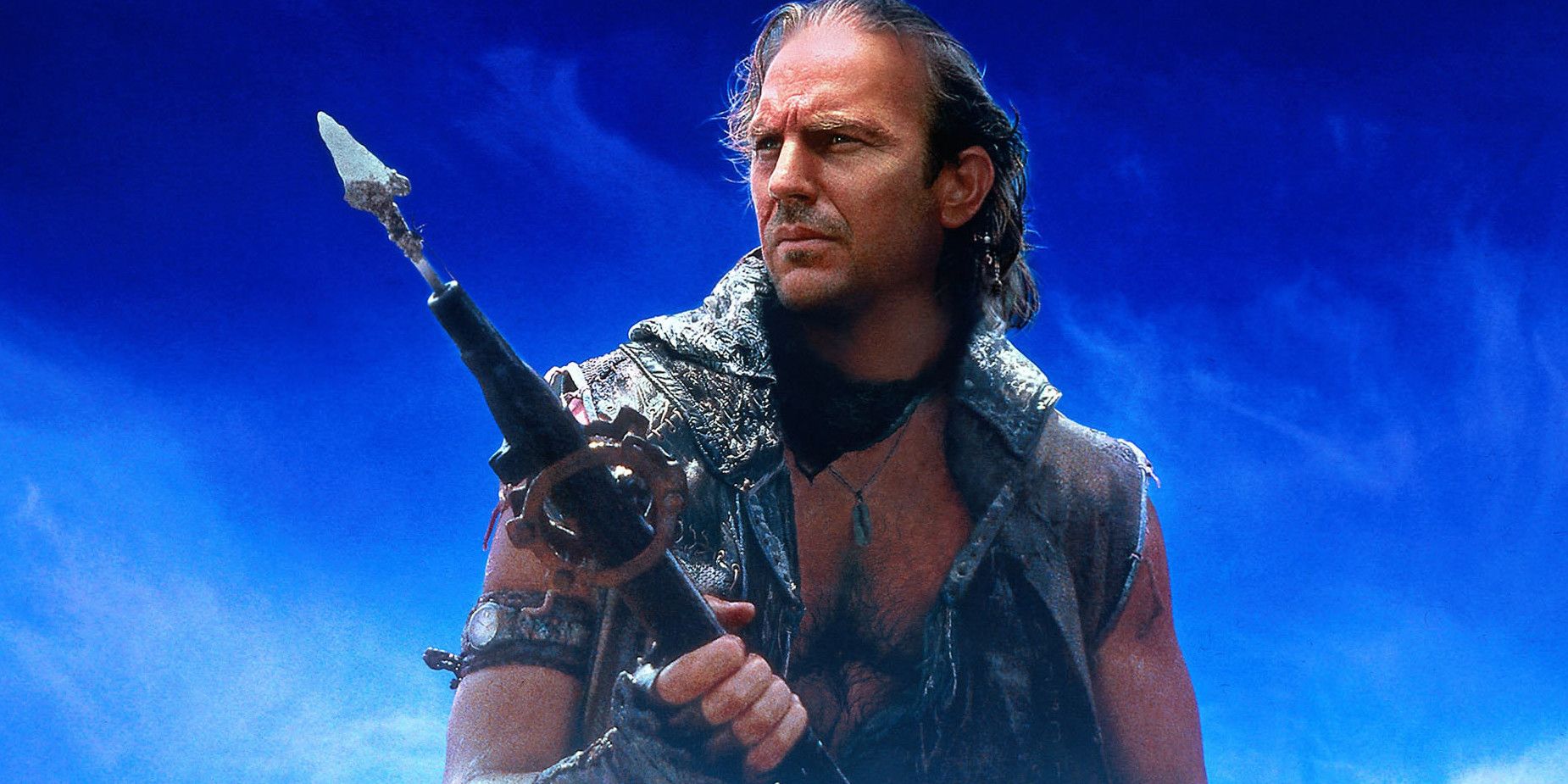You've got to spend money to make money. That's the rule, right? Well, no. And if the movie industry doesn't learn that soon they're going to be in serious trouble.This has been one of the worst Summers for Hollywood in recent memory. Box office attendance was down, more major tentpoles than ever bombed and it was capped off with the worst Labor Day weekend since 1999. Within that there have been successes - Get Out, Wonder Woman and IT all bucked the trend - but they're taken as outliers.The industry has not taken this sitting down and has aggressively lashed out at all sides. Rotten Tomatoes is apparently the studio's choice blame for allowing audiences to know if the movie they're about to drop $15+ on is actually terrible, and MoviePass has become a key debate for starting a rolling ball that will chokehold the theaters.
Related: Rotten Tomatoes, Metacritic, IMDb & CinemaScore Explained
But, if we're being frank, there's no one Hollywood can blame but itself. The ideas behind a lad-style King Arthur, a non-horror reboot of The Mummy with Tom Cruise or a movie called Monster Trucks are weak sauce at best, but they were each gifted with ridiculous budgets ($175M, a reported but totally more $125M and $125M respectively) that meant to break even would be a hard task. Hollywood has problems with what it's green lighting, but this discussion about profitability could be avoided - or at least lessened - if they just stopped betting nations' GDP on dreck like Valerian and the City of a Thousand Planets.
We're not just making baseless claims here. Now summer's over, we crunched some numbers and tried to see what really was successful this year. And it's very revealing.
The Numbers (This Page)
For reference, we're going to start mainly looking at domestic totals and just the raw numbers (via Box Office Mojo, accurate at the time of writing).
Top 10 Highest Grossing Movies of 2017 (So Far)
Here's the Top 10 domestically as it looks now:
1. Beauty and the Beast - $504.0M
2. Wonder Woman - $411.7M
3. Guardians of the Galaxy Vol. 2 - $389.8M
4. Spider-Man: Homecoming - $331.9M
5. IT - $266.3M
6. Despicable Me 3 - $261.8M
7. Logan - $226.3M
8. The Fate of the Furious - $225.8M
9. Dunkirk - $186.3M
10. The LEGO Batman Movie - $175.8M
The lessons to learn from that list are rather simple: superheroes and franchises rule the roost - even the two animated slots this year were taken over by superheroic pastiches. The only real exceptions are Dunkirk, which is an outlier care of Christopher Nolan, and IT, which has strong branding besides. The only other major point to be made is that good sells: all but one of these movies (Despicable Me 3) are Fresh on Rotten Tomatoes, and a staggering six aren't only Certified Fresh but score well over 90% with critics and comparably with audiences. Basically, this Top 10 eight-and-a-half months in doesn't offer much beyond what we all already know.
However, we're assuming all these films (and the hundreds they've beaten out) come from the same baseline. They don't. The most expensive movie on that list was The Fate of the Furious on $250M, while the cheapest was IT a whopping seven times cheaper on $35M. This means while F. Gary Gray's film grossed comparable numbers to Andy Muschietti's, it actually lost money while IT made a hefty sum. We need another measurement.
Top 10 Highest Netting Movies
Let's shift things and instead of looking at gross profit, look at net profit - the actual take home money from a release.
That's hard to calculate from available numbers, so here's your disclaimer. Everything further is rough estimates - the math is far more complicated accounting than we have time for here (and studios keep real numbers close to their chest). And, while conventional Hollywood wisdom is that a movie's marketing cost essentially doubles the production budget, due to the wide range of films we're dealing with that's not a perfect comparison. Instead, we're going to simply subtract budget from these domestic totals for a scalable sense of net profit.
Adjusting that Top 10 for gross minus budget, we get a somewhat different looking list:
1. Beauty and the Beast - $344.0M ($160M budget)
2. Wonder Woman - $262.7M ($149M budget)
3. IT - $231.3M ($35M budget)
4. Guardians of the Galaxy Vol. 2 - $189.9M ($200M budget)
5. Despicable Me 3 - $181.8M ($80M budget)
6. Get Out - $171.0M ($4.5M budget)
7. Spider-Man: Homecoming - $156.9M ($175M budget)
8. Logan - $129.3M ($97M budget)
9. Split - $129.1M ($9M budget)
10. Girl's Trip - $95.8M ($19M budget)
Seven of the original Top 10 still remain, but you can see a clear delineation between mega-smashes and modest budgets. The others are either mid-range films that hit a niche market, or low-budget horrors that hit massively. IT deserves specific praise considering that these numbers come from its first three weeks alone - if it continues on this track it could close in on the top spot.
Related: Why IT Succeeded Where The Dark Tower Failed
The most striking thing here, though, is that Hollywood really is in trouble. Only nine movies have a profit margin greater than $100M (and, out of the Top 50 movies, only 32 made a profit domestically).
Top 10 Most Profitable Movies
But this still isn't total level ground. While Warners made double the net on Wonder Woman to Universal with Split, that pretends the former didn't initially set them back $140M more. It's more profit, but on a much bigger initial investment.
If we take these numbers and divide by budget, we get their approximate profitability:
1. Get Out - 3800%
2. Split - 1534%
3. The Big Sick - 754%
4. 47 Meters Deep - 705%
5. IT - 661%
6. Annabelle: Creation - 574%
7. Girls Trip - 504%
8. Despicable Me 3 - 227%
9. Baby Driver - 216%
10. Beauty and the Beast - 215%
So the $4.5M Universal put on Get Out yielded them a whopping 3800% profit of $166.5M, whereas Beast's $160 led to a 215% profit of $344.0M. Both of these are good - that 215% for Beast is pure profit - but one is obviously better and lower risk.
Suddenly the message of what works changes. Now only three of the original Top 10 remain, and only one makes the Top 5; you have the biggest hit of the expensive films, and then Despicable Me 3 and IT succeeding mostly off their more modest costs. The rest are all cheap films that struck a chord. There's a host of reasons why, but clearly cost is key.
Top 10 Least Profitable Movies
To really see how important budget is, though, we need to look at the flipside of this. Here's the bottom 10 in terms of profitability from the Top 50 biggest films.
1. King Arthur: Legend of the Sword -77.6% ($175M budget)
2. Valerian and the City of a Thousand Planets -77.2% ($177.2M budget)
3. Monster Trucks -73.3% ($125M budget)
4. The Great Wall -70.0% ($150M budget)
5. Ghost in the Shell -63.1% ($110M budget)
6. xXx: The Return of Xander Cage -47.1% ($85M budget)
7. Transformers: The Last Knight -40.0% ($217M budget)
8. The Mummy -36.0% ($125M budget)
9. Pirates of the Caribbean: Dead Men Tell No Tales -25.0% ($230M budget)
10. Smurfs: The Lost Village -25.9% ($60M budget)
NOTE: Kingsman: The Golden Circle would at present place 6th, but has been removed due to only being on its first week of release.
For every dollar spent, King Arthur lost WB $1.78. There's a lot here to dissect - many of these movies became profitable thanks to international audiences (specifically China), and their failure against the traditional Top 10 comes from their old-fashioned approach to movie green lighting - but there's one big thing linking all of them (except maybe Smurfs) in direct contrast to our previous lists: they cost way too much. These are a lot of the studios' big bets - four of the ten most expensive films of the year are here - that will actually offset many of the previous successes.
Hollywood's Trying To Adapt To A Changing Market By Throwing Money At It
All those numbers go to show that profitability and return on investment in modern moviemaking is pretty much dependent on budget. It's a complex problem that goes beyond what we can cover here, but at its core is a result of the changing industry. It used to be that studios would produce a wide range of movies and use the profits of all to offset their bigger, potentially risky projects. Now, though, the top end is getting so dominant that a whole type of mid-range films are scarce and movies that should have been at that pricing amount now go past $100 million for posterity despite there being no comparable box office shift.
As these expensive movies become more lone, the risk is increased so they become more homogenized and generic, and the payments more linear. The logic should be that if you spend $X million on a project, you need to make back $2X million to break even. The problem is that in many cases it seems studios view that breaking even as the success; if a property theoretically can make $2X million, then why not give an $X million budget? There's no hedging of bets or risk management for a potential bomb.
There is also the factor of understanding the audience. The Top 5 least profitable movies wouldn't have made a profit domestically with half their reported cost, a staggering fact that means the problem may be less spending $175M on King Arthur and more in approving a lad-hued King Arthur movie in the first place. But that comes from the same confusion of expectation and allowance.
You need to know how much to spend and when to stop. Logan perhaps best shows this. It was comfortably Top 10 for net profit, bringing back $129.3M domestically (and a lot more internationally), but that status hinges on it keeping on the low-end of tentpoles. The movie wound up costing Fox $97M, which was the right amount for a gritty, adult Wolverine movie. Had that been gifted a $150M budget, it would have been considerably less viable. Blade Runner 2049 will be an interesting case study in this regard; the film reportedly cost $185M, meaning a $370M global total is needed, a big ask from the cerebral legacy property (Alien: Covenant would have been a disaster if it hadn't had a modest budget identical to Logan).
Low Budget Movies Don't Only Work - They Float
But what the numbers really show is that true profitability lies away from the mega-bucks and franchises. The low-budget model is proven and leads to profits comparable to what you get from the year's biggest and most expensive hits.
The best example of this is Blumhouse. Jason Blum was a protegee of Harvey Weinstein, who found a crack in the firmament and started producing crowd-pleasing cult hits and Oscar bait. After learning from Mr. W, Blum went out and started acquiring and producing super low-budget horror movies he could either sell on the home video circuit or, in the case of a real winner, push them into cinemas to make a massive buck. This has led to such successes as Paranormal Activity, Insidious, The Gift, The Purge and 2017's two most profitable films, Get Out and Split. He was also behind Whiplash and is now moving into bigger things with the likes of Glass and Spawn. The model - low-risk, high-concept films with a targeted audience - is strong. And it's replicable.
Related: Why Blumhouse is the Perfect Studio For A New Spawn Movie
So why isn't there more like this? Warner Bros. are following this with The Conjuring Universe (and to a degree IT) and comedies by their nature hit the mark, but otherwise there's no shift in the studio system yet. Of course, it's not totally scalable. You can't just have every $100M tentpole turned into ten smaller productions; there's a limit to the number of movies that can be released and will make an impact, and Blumhouse's model hinges on quality and nurtured talent. But you can diversify and offset failures with these.
International Box Office Helps - But Isn't The Easy Fix
Before we conclude, a clarification: our maths is based on domestic numbers, which is conventional yet in 2017 not the full picture. For the biggest movies, worldwide take makes up a considerably larger percentage than domestic - especially now China is the powerhouse it is. The Fate of the Furious made 81.8% of its $1.2 billion haul outside of the US and even for domestic runners like Beauty and the Beast it was 60.1%. This is how Spider-Man: Homecoming can make more than Wonder Woman: Diana was a bigger hit in the west than elsewhere.
And it must be said that of those films in the Bottom 10 of profitability, many were clearly angling for an international lease of life. The Mummy, and by extension the Dark Universe, was pretty much saved by Cruise's global cache. But even this argument doesn't quite hold up. Applying similar math to the worldwide box office, we still have King Arthur, Valerian, Power Rangers, Ghost in the Shell, Life and The Dark Tower losing money, and most of the others aren't really flying either. They're breaking even, but that's damage control, not success.
Conclusion: Over-Spending Isn't Cool Any More
It used to be that being the most expensive movie ever made was a sense of artistic achievement. For Ben-Hur, Superman, Terminator 2: Judgment Day, Titanic et al, costing so much was a key reason to get people to the cinema; the budget was the signal an audacious filmmaker was pushing the boundaries of the medium.
Now, when numbers that were once eyewatering as passe, it's more like Cleopatra or Waterworld, two of the most infamous cases of uncontrolled spending; if you pay a lot, it's down to bad management. And this is where it gets scary: even those notorious bombs (both were more successful than reputation suggests but failed to turn a profit on initial release) weren't as severe as what we've seen for Valerian and King Arthur. We're literally at a point where the go-to examples of out-of-control budgets are considerably safer bets than the majority of what Hollywood's financing today. Something needs to change.

